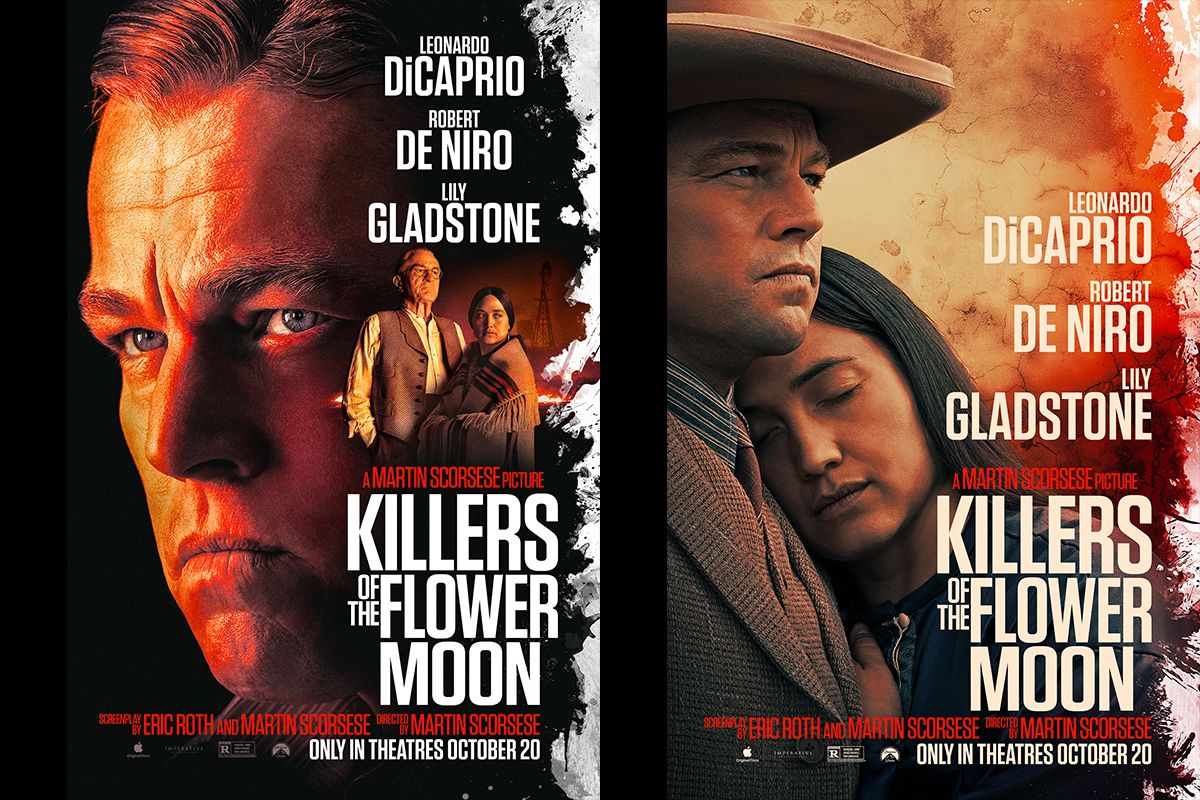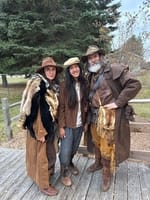
by Ryann Gordon
From the first scene in Killers of the Flower Moon, Martin Scorsese warns those watching what’s in store. Elders gather in a tent and bury a sacred pipe while children peak in from outside. Weeping fills the tent, as the elders warn us of an impending death — the death of the old ways. As oil burst from the ground, it’s all party … until it’s not.
The story of the Osage peoples’ wealth is so perfectly contrasted with the looming tragedy. As the money came, the culture left. The whitewashing is conveyed both literally and metaphorically in the film, as elders judge younger generations from both sides, white and native, which Scorsese juxtaposes elegantly.
To make a three-and-a-half-hour film that doesn’t drag out is a remarkable success. So many sub-narratives fill the plot, that one would expect to be boggled; but Scorsese carries viewers through the plotlines with ease, never losing an inch of detail and delivering a deep narrative of truth that brings tears, sickness and a new understanding of an entire segment of history one would never know unless informed. And it doesn’t leave you empty handed, yet rather with a sense of justice, though painful, affirmed.
Leonardo DiCaprio puts on one of his best performances as the film’s key antagonist, Ernest Burkhart. His charm sucks you in and spits you out, as he perfectly characterizes a man of pure evil cloaked by sheer nonchalance and ignorance. You feel love for him and appall all along, as he transforms from a fresh-faced World War I veteran to a haggard conspirator and utter scoundrel with such grace that you often forget the evil man he is.
The knife gets further twisted by Robert DeNiro, whose depiction of ruthless Fairfax tycoon William Hale, aka “King” of the Osage Hills, takes you on a journey of disbelief, as he gains the trust of the Osage people and the viewers, only to misplace it in the most heinous way. From the start, he draws you in as a champion on their culture and slyly arises as a horrendous figure of unfathomable betrayal. His ability to avoid full blame both in history and to viewers underscores the calculated greed that enabled the countless murders of Osage citizens and ultimately solidifies the viewer’s feelings of outrage at the real-life perpetrators.
If the dowdy, frowning mouths of old white townsmen didn’t make you sick, the graphic scenes of death and the betrayal and deceit played upon Mollie’s family would. Illness is desensitized and overshadowed by ongoing mourning and grief in the life of Mollie Burkhart. Lily Gladstone pulls viewers in with her calming charm and wisdom, remaining stoic and committed, even on the brink of death herself. We feel her pain and triumph as she makes what she believes to be her dying voyage to Washington D.C. Hearts burst when her feat is vindicated, and she successfully summons the Federal Bureau of Investigation to Osage County to ultimately bring justice to the murders.
In a film filled with discomfort and anger, Scorsese gives viewers a visceral insight on the injustice and dehumanization suffered by the Osage after the discovery of oil. Though difficult to watch at times, eyes remain focused on the historical context of the film and ultimate fortitude of the Osage people who nearly dwindled, but never faltered completely.
Killers of the Flower Moon is a towering achievement for the Osage, filmmakers and viewers, as the movie’s final scene depicts a hopeful future with a visual gathering of modern Osage. Though their people faced attempted destruction, they rose from the flames, quite literally in one of the final scenes.
The film’s grassroots involvement is undeniable, telling an important story about Osage and Oklahoma history, and the birth of the FBI. In a film admittedly close to his heart, Martin Scorsese validates his passion in a final cameo that illustrates his connection to the emotional story of the movie. Though the story’s tragedies weigh heavy on the viewer, we are left with more hope than loss. The strength to carry on and stays with us as we leave the theater, shedding a new light on history, especially for those in the state of Oklahoma.





